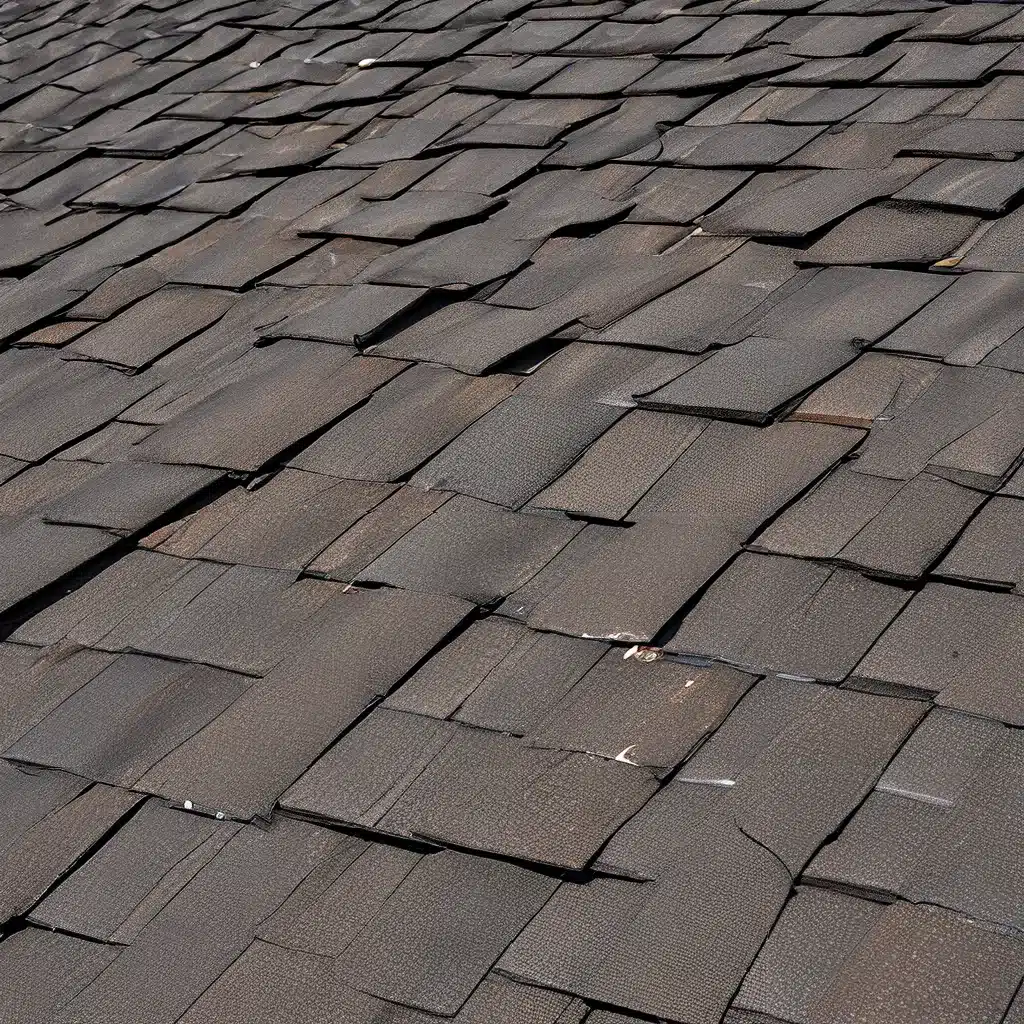
Ah, the mysterious world of roof ventilation – where hot air rises, cool air circulates, and the delicate balance between the two can either make or break the comfort and efficiency of your home. As a seasoned homeowner, I’ve come to learn that this unsung hero of the roofing system plays a crucial role in keeping our living spaces comfortable, energy-efficient, and protected from the elements.
The Vital Role of Roof Ventilation
Let’s start with the basics: roof ventilation is the process of allowing hot, moist air to escape the attic or roof space, while simultaneously drawing in fresh, cooler air. This simple yet ingenious system helps regulate the temperature and humidity levels in our homes, preventing a host of problems that can arise from poor ventilation.
Imagine your attic as a sauna, with the sun’s relentless rays beating down on the roof and trapping the heat inside. Without proper ventilation, this trapped heat can lead to a number of issues, such as increased cooling costs, moisture buildup, and even structural damage to your roof. By allowing that hot air to escape and drawing in fresh, cool air, roof ventilation helps maintain a comfortable and healthy indoor environment.
The Science Behind Roof Ventilation
But how does this magical system actually work? It all comes down to the principles of convection and air pressure.
As the sun warms the roof, the air inside the attic or roof space begins to heat up. This hot air naturally rises, creating a pressure differential that pulls in cooler air from the outside. This air circulation, driven by the temperature and pressure differences, is the foundation of effective roof ventilation.
The key components that make this process work are intake vents (such as soffit vents or gable vents) and exhaust vents (like ridge vents or turbine vents). The intake vents allow the cooler outside air to enter the attic or roof space, while the exhaust vents allow the hot, moist air to escape.
By carefully designing and positioning these vents, homeowners and roofing experts can create a seamless, efficient air flow that keeps the roof space well-ventilated and the indoor climate comfortable.
Factors to Consider for Optimal Roof Ventilation
Now that we understand the basic principles, let’s dive a little deeper into the factors that contribute to optimal roof ventilation:
-
Roof Design: The shape and slope of your roof can have a significant impact on airflow. Gable roofs, for example, tend to be more effective at promoting natural ventilation compared to flat or low-pitched roofs.
-
Attic Insulation: Proper insulation in the attic helps maintain the temperature differential between the inside and outside, enhancing the efficiency of the ventilation system.
-
Vent Placement: The strategic placement of intake and exhaust vents is crucial. Intake vents should be located low on the roof, while exhaust vents should be positioned at the highest point to take advantage of the natural convection.
-
Vent Size and Number: The size and number of vents must be calculated based on the square footage of the attic or roof space to ensure adequate air flow. Underestimating the required ventilation can lead to hot spots and moisture buildup.
-
Climate Considerations: The climate in your region can also play a role in determining the optimal ventilation system. For example, hot, humid climates may require additional measures, such as powered attic fans or dehumidifiers, to maintain comfortable indoor conditions.
Debunking Roof Ventilation Myths
As with any complex system, there are a few persistent myths about roof ventilation that I think it’s important to address:
Myth 1: More vents are always better. While it’s true that adequate ventilation is crucial, having too many vents can actually disrupt the delicate air flow and create uneven temperature distribution.
Myth 2: Roof ventilation is only necessary in hot climates. In reality, proper ventilation is important year-round, as it helps regulate temperature and humidity levels in both hot and cold weather.
Myth 3: Roof ventilation is maintenance-free. Like any other component of your home, the ventilation system requires regular inspection and cleaning to ensure optimal performance.
By understanding and debunking these myths, you can work with your roofing contractor to design a ventilation system that truly meets the unique needs of your home and your local climate.
The Evolution of Roof Ventilation Technology
As with many aspects of home construction and maintenance, the world of roof ventilation has seen some exciting technological advancements in recent years. From innovative vent designs to smart home integration, the options for homeowners are constantly expanding.
One of the more fascinating developments is the rise of solar-powered attic fans, which use photovoltaic cells to generate the electricity needed to power a fan that efficiently vents hot air from the attic. These eco-friendly solutions can provide a significant boost to your home’s energy efficiency, all while reducing your carbon footprint.
Another intriguing innovation is the integration of smart home technology with roof ventilation systems. By connecting vents and fans to your home’s smart hub, you can now monitor and control your ventilation in real-time, adjusting it based on changing weather conditions or your own preferences.
As research and development in this field continues, I’m excited to see what other cutting-edge solutions will emerge to help homeowners like myself maximize the performance and efficiency of our roofing systems.
Maintaining a Healthy, Comfortable Home
At the end of the day, proper roof ventilation is essential for maintaining a healthy, comfortable, and energy-efficient home. By understanding the science behind it, recognizing the key factors to consider, and staying up-to-date on the latest technological advancements, we can all work towards creating the perfect indoor climate, no matter the weather outside.
So, the next time you glance up at your roof, take a moment to appreciate the unsung hero that is your ventilation system. With a little care and attention, it can continue to keep your home feeling cool, dry, and protected for years to come.